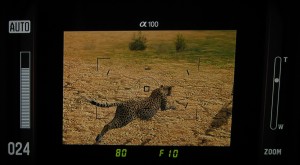266th played so far
Genre: Simulation
Platform: Playstation 3
Year of Release: 2008
Developer: Rhino Studios
Publisher: Sony Computer Entertainment/Natsume
Following Bonsai Barber, today another one of the weirder games we have to play. A game I’ve been more interested in, and that I’ve been encouraged to play after some other recent events.
Afrika (known in Japan as Hakuna Matata) is a photography game. You go out on a safari and take pictures of the wild animals wandering around. There are very few games that are part of the genre and its prime exemplar is, oddly enough, Pokémon Snap. Yeah, there’s the Fatal Frame series, but its focus is different. It’s easy to see why – the genre doesn’t sound interesting, but considering how much call there was for Snap to be released on the virtual console, it seems to have hit a chord somehow. Now we see whether it actually is a good game.
Our Thoughts
So yeah, the game is certainly interesting. The idea behind the game is quite interesting. You’re a photographer on a safari in some unspecified (but geographically varied) part of Africa. The area has never really been explored for animals that live there – they are all known species, but you’re spending part of your time cataloging them (well, taking a picture of them to show they’re there). When they’re found, you get further assignments about them, asking you to take pictures of the animals in various poses and places. They are allegedly for use in magazines, books, lessons, research and sometimes just to prove a point to someone.
It works well as an excuse to get you to go out there and get different animal pictures and as a good way to score your work. It also neatly forces you to explore the world and take advantage of all the things you can do – from chasing cheetahs to climbing trees so you can get a good shot of a giraffe eating leaves.
Part of the reason this works is the realistic behaviour of animals (ish, as sometimes they do walk headfirst into a tree and keep doing so). Sometimes you need to get an assignment to do them, but even if an ostrich dance isn’t on the cards, the meandering of animals as they cross the plains is relaxing to watch and getting a good shot requires just the right amount of patience. Just as much, in fact, because the animals react to your movement, so running in place will guarantee the zebra you’re chasing will run off. This also means you’ll need to wait a while after you arrive at a spotting place, since your car is guaranteed to scare most of them.
These spotting places, by the way, pretty much fill the role of levels or locations in earlier games. While the game features a large sandbox world, it’s only these few places where animals congregate (at least initially) and you’ll mostly be driven to and from them. It’s a bit limiting, but helps as a good way of slowly opening the world to you.
The mission structure has one downside – it sometimes forces an order of encounters that feels unnatural. One particular moment is the aforementioned cheetah. Having been conditioned into taking pictures of every new creature you encounter, when you see it and try to take a snap, control is taken away from you and the cheetah gets to run away before you can make a picture. Not because you’re too slow, but because your guide starts talking and triggers a cutscene. This is intentional – it leads into a ‘big hunt’ sequence where you chase the cheetah and try to take the best pictures as it takes down an antelope – but we were frustrated by it at first (I was livid).
One weird omission is voice acting. I’m not necessarily saying you need it for a game like this, but there are several sequences where the game zooms in on your character and another talking and the text is giving through subtitles. With the way the scene is set up though, you’re led to believe there will be voice acting. Somehow, the sequences just feel wrong – as if they forgot to add it, leaving a very static scene. The main reason for a lack of voice acting is quite a simple one; localization. It makes sense until you remember that this game was not released outside of the US and the Asian market. Now, I am not disputing the cost to localize everything between Japanese and English but it seems a little bit half-arsed. More so than games having ‘foreign characters’ without the proper names or even their language.
It’s a minor criticism though, easily forgotten once you get moving again and see a hippo enjoying the sun.
Final Thoughts
The game was slow at times, which wasn’t great for the less patient moments, but in the end it works, it’s what you would expect. The game is enjoyable, and watching the animals interact is almost magical at times.
It’s a shame the game seems to be lacking a bit of polish in some places, where it doesn’t affect gameplay as much, but does get in the way a bit. Luckily that’s when you’re not actually playing the game, so it works out, but it makes you wish they invested a tad more time in these things.
